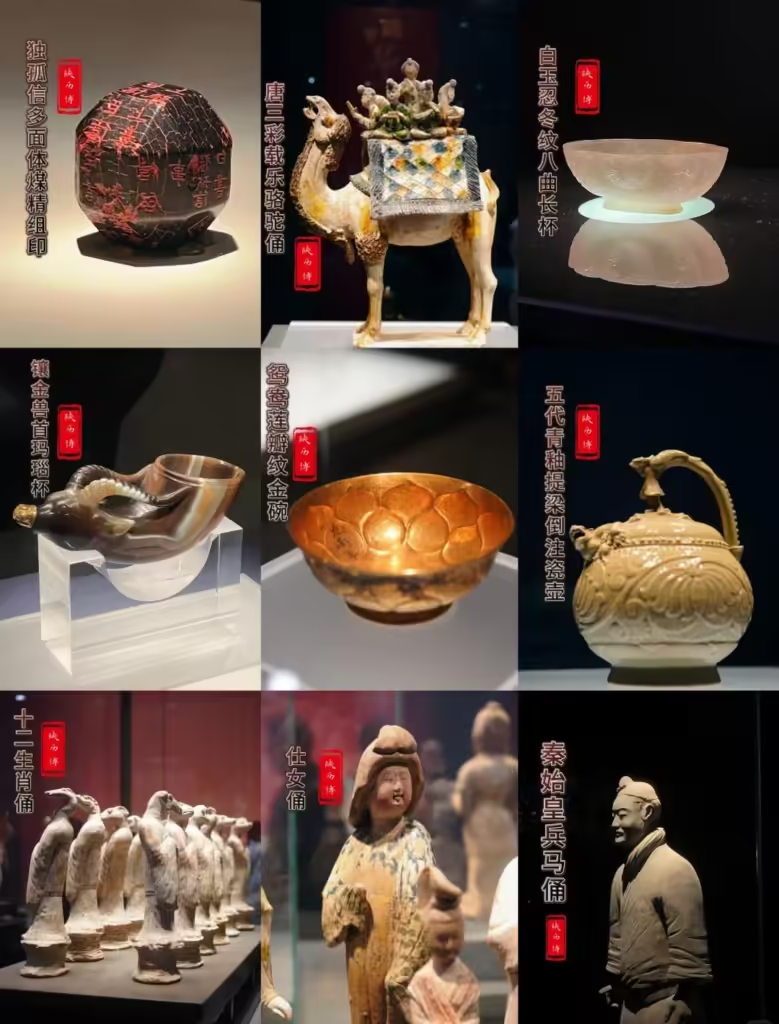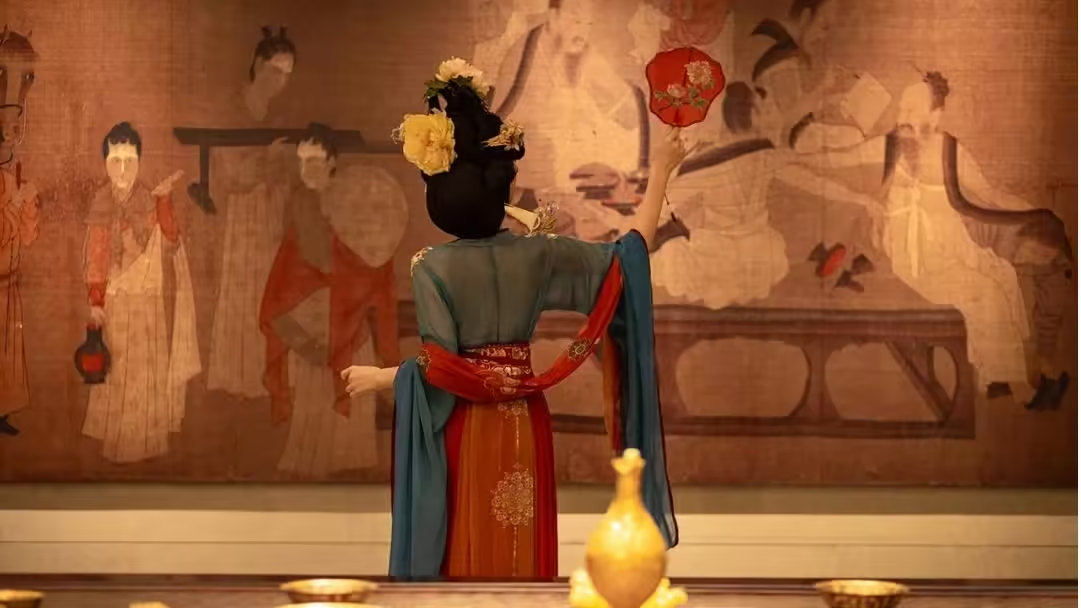The Shaanxi History Museum is a treasure trove of ancient artifacts, showcasing the rich cultural heritage of China. Among its numerous exhibits, ten standout pieces encapsulate the grandeur and historical significance of different dynasties. From intricate craftsmanship to profound historical narratives, these treasures offer a glimpse into China’s illustrious past.
Gold-inlaid Beast-Head Agate Cup (镶金兽首玛瑙杯): Crafted from unique banded agate, the Gold-inlaid Beast-Head Agate Cup appears to be a generous gift from nature. Artisans skillfully sculpted it into a wine cup with elegant lines and a lifelike beast head, embodying opulence through its golden inlays. This cup serves as a window into the flourishing Tang Dynasty, remaining a national treasure that narrates a thousand-year legacy while being prohibited from international exhibitions.
Yudi Tripod (旟鼎): The Yudi Tripod stands majestically, embodying the weight of history. Measuring 77 cm in height and weighing 78.5 kg, its broad mouth showcases the power of the Western Zhou Dynasty. The mysterious motifs etched onto its surface seem to conceal a code waiting to be deciphered, bearing witness to the glory of a bygone dynasty. Each inscription holds the wisdom and strength of ancient peoples, resembling an immortal monument.
Wusi Wei Tripod (五祀卫鼎): The inscriptions on the Wusi Wei Tripod are crucial. These ancient texts document the social conditions, land use, and economy during the mid-Western Zhou Dynasty. Much like a bronze historical record, they provide insight into the authentic experiences of ancient times. The words inscribed within guide us through the wisdom of past lives.
Duoyou Tripod (多友鼎): The Duoyou Tripod’s inscriptions recount fierce warfare during the late Western Zhou period when the Xianyun tribe invaded. The twenty-two lines of inscriptions vividly depict the years of conflict. More than just a vessel, it stands as a testament to courage and resilience, reminding us of the preciousness of peace amidst the ebb and flow of history.
Empress Seal (皇后之玺): Though small, the Empress Seal carries immense significance. Its engraved seal script represents the authority of the Qin and Han imperial seal system. The exquisite craftsmanship and unique shape highlight royal elegance, having once witnessed the shifting tides of court intrigue in the hands of the palace’s leading ladies.

Ceremonial Guard Tower Painting (阙楼仪仗图): This painting unfolds a grand narrative of the Tang Dynasty. Against a mountainous backdrop, the towering city walls and ceremonial guard create a striking scene. The artist’s meticulous strokes capture the majesty of the Tang era, making it a precious example of architectural painting that helps us understand the period’s construction and ceremonial systems.
Lotus-Petal Pattern Gold Bowl (鸳鸯莲瓣纹金碗): The golden bowl shines with the splendor of the Tang Dynasty. Its design is crafted through the technique of hammering pure gold, resulting in a full-bodied form adorned with exquisite patterns that bloom like flowers. A blend of Western craftsmanship and Eastern aesthetics, this bowl represents the pinnacle of Tang gold and silverware, witnessing the prosperity of the era.
Gilt Silver Teapot with Dancing Horse Motif (鎏金舞马衔杯纹银壶): The teapot, featuring a dancing horse, appears to be caught in a graceful dance. It commemorates the unique horse-dancing culture of the Tang Dynasty, showcasing remarkable craftsmanship with its distinctive design. The majestic horses resonate with historical accounts, transporting us back to the romanticism of the Tang era.
Tri-colored Camel Carrying Musicians Figurine (三彩骆驼载乐俑): This piece embodies the essence of Silk Road culture. A band plays on the back of a camel, creating a symphony of cultural exchange, with each musician displaying a unique expression. The female dancer adds elegance to the scene. This figurine exemplifies the Tang Dynasty’s openness and inclusiveness, showcasing the prosperity of the Silk Road through exquisite Tang Sancai pottery.
Celadon Spouted Water Jug (青釉提梁倒灌壶): The design of the Celadon Spouted Water Jug is nothing short of ingenious. Without an opening or lid, it remarkably allows water to be poured. This extraordinary creation from the Yaozhou Kiln of the Five Dynasties is both archaic and elegant, adorned with lavish decorations. It stands as an awe-inspiring piece of art that seems to transcend time.

